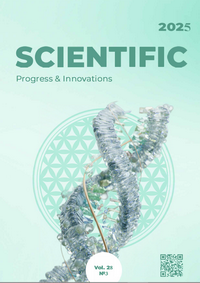Diagnostics of dermatites and use of plant-based preparations in the treatment of dogs
DOI:
https://doi.org/10.31210/spi2025.28.03.43Keywords:
dermatitis, animal diagnostics and therapy, skin diseases, dog, medicinal plantsAbstract
Animal dermatites are spread skin pathologies manifested by a wide range of symptoms, largely common to various nosological units. One of the problems in veterinary medicine for small-size animals are dermatites of aller-gic origin. This is a series of diseases characterized by itching, erythema, rashes, pyoderma, and secondary skin lesions. Domestic dogs are animals for which dermatites of allergic origin are a significant problem. The diagnostics of allergic dermatites in dogs and the treatment of diseased animals require a differential approach and appropriate therapy. Preparations for external use based on natural active ingredients always require clinical testing, taking into account the differential diagnostics of the pathology. The results of examining dogs with dermatites of various eti-ologies are described in the article. The spread of allergic dog dermatitis in the city of Poltava was analyzed. The study results show that flea dermatitis is registered in 52 % of dogs from the total number of dermatitis cases, atopic dermatitis – in 29.6 %, food allergy – in 12.2 %, contact dermatitis – in 6.1 %. The attention was focused on the manifestations of dermatites, their localization, and it was noted that skin lesions are often complicated by secondary infection. The study covered 58 dogs with dermatitis, which were divided into four control and four experimental groups depending on the etiological factor of dermatitis. The dogs in the control groups were treated according to the dermatitis treatment protocol depending on the etiology. The preparation for external use, Tsilytel Allergostop cream-balm was added to the treatment regimen for the animals in the experimental groups. The condition of the dogs and the skin regeneration process were monitored on the 14th, 20th, and 60th days of the treatment. The results of the treatment in the experimental groups showed a positive effect on average 3-5 days earlier compared to the treatment regimen for the animals in the control groups.
Downloads
Published
How to Cite
Issue
Section
License
Copyright (c) 2025 Scientific Progress & Innovations

This work is licensed under a Creative Commons Attribution 4.0 International License.

 Creative Commons Attribution 4.0 International Licens
Creative Commons Attribution 4.0 International Licens